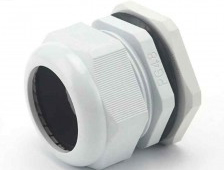
What is a cable gland in CMP?
A cable gland, also known as a cable connector or cable fitting, serves several purposes:
Cable Securing: It provides a means to secure the cables within the CMP, preventing them from being pulled out or becoming loose.
Environmental Seal: Cable glands are designed to provide a seal between the cable and the CMP, protecting the interior from environmental elements such as dust, moisture, and gases.
Electromagnetic Compatibility (EMC): In some cases, cable glands are designed to provide EMC shielding, helping to minimize electromagnetic interference.
Hazardous Area Protection: In certain applications, such as those in potentially explosive atmospheres, specialized cable glands may be used to ensure safety by preventing the entry of flammable gases.
In the context of cables and cable management, CMP can refer to Corrugated Metal Conduit or Corrugated Metal Pipe. The choice of cable gland may depend on the specific requirements of the installation, including the type of cables being used, environmental conditions, and any regulatory standards that need to be met.
How many types of cable glands are there?
What is the difference between a cable gland and a barrier gland?
What is the difference between cable gland and cable connector?

